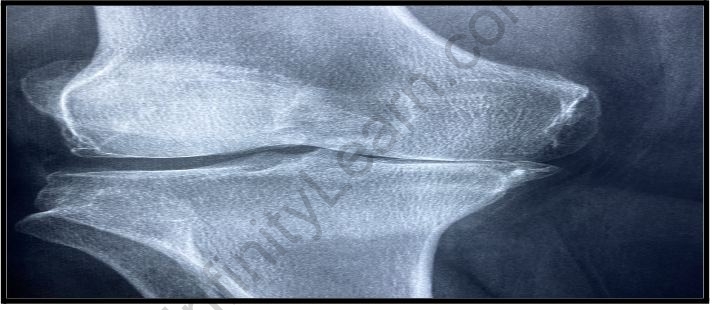Table of Contents
Arthritis is defined as a condition that causes inflammation of the joints. This condition is common but serious as it directly affects the knees. Although mainly seen in older adults, this condition can be found in children, adolescents, and adults.
Arthritis is one of the most common diseases in India and around the world regardless of age, gender, or other important factors. Rheumatoid arthritis can be defined as a disorder of the joints leading to joint damage, joint stiffness, or swelling of one or more joints. Some of the most common symptoms that point directly to arthritis are inflammation, pain, and a burning sensation.
Types of Arthritis:
Arthritis is one of the most common diseases found in all age groups and genders. Whether you are 18 or 50 years old, you can get rheumatoid arthritis. People often do not understand that joint pain is common, which makes the condition worse in most cases. However, it is a disability that can lead to even permanent health problems.
More than 200 types of arthritis affect the joints, connective tissue, and other connective tissue. Some of the most common are osteoarthritis, rheumatoid arthritis, and gout.
Osteoarthritis:
One of the most common forms of arthritis is osteoarthritis which is the most common cause of damage to the cartilage of the joints and aging of the surrounding bones, which ultimately reduces friction between the two bones. The most common symptoms of this condition are fever or severe pain in the joints. This condition can be reversed with timely intervention and care.
Some of the preventative measures include sticking to a balanced diet, staying active, maintaining a healthy weight, avoiding injury, and indulging in exercise. This condition is more common in older women or people who are suffering from obesity, premature ejaculation, or a sedentary lifestyle.
Rheumatoid arthritis (RA):
RA is caused by genetic factors such as human leukocyte antigen (HLA) alleles, while the other risk factors are natural factors, including infection and smoking. It is a chronic disease that mainly affects the joints and other organs. When a person’s immune system attacks the lining of his cartilage, it leads to conditions such as Rheumatoid arthritis. In this condition, erosion of the two opposing bones usually affects the knees, elbows, and wrists. This condition is more common in teens or people 20 years of age and older.
Infectious Arthritis:
Another serious form of arthritis is contagious arthritis that is largely caused by a combination of minor ailments. This condition is the result of viruses that attack the joints. Some of the most common symptoms are swelling, inflammation, and severe pain. Several viruses are responsible for infecting the joints, including salmonella, shigella, and chlamydia.

Symptoms of Arthritis
Several symptoms can indicate a person with arthritis. This includes-
- Stiffness or swelling of the joints
- Warmth and redness of the joints
- Pain around the joints
- Joint Disability
- Fatigue and Malaise
- Gentleness of the members
- It’s hard to walk
- Muscle pain
- Lame
- Insomnia
Apart from this, other common symptoms such as pain and hot flashes directly indicate arthritis.
Arthritis Causes
There are a number of factors that can cause arthritis. Compared to men, women are more likely to have this condition. Some of the most common causes of arthritis are the following:
- Infection of the joints
- Metabolic abnormalities
- Normal ageing
- Family inheritance
- Immune attack
- Improper Eating
- Malnutrition
- Ageing
Treatment of Arthritis
While there is no permanent cure for this condition, there are a few treatments that health professionals recommend to treat swollen joints. These therapies are aimed at reducing future problems and reducing pain. The most common treatment for arthritis is-
- Joint surgery instead
- Non-pharmacologic therapies
- Massage and acupressure
- Physical therapy
- Medications
- Prevention of Arthritis
Prevention is better than cure, especially if there are specific treatments available. Here are a few effective ways to prevent arthritis or other joint diseases:
- Regular physical exercise such as walking, running, swimming.
- Adherence to a healthy diet
- Add food to your diet rich in vitamin D.
- Avoid injury
- Maintaining a healthy weight
- Perform exercises that have a positive effect on the knees.
Also read: Important Topic of Biology: Osteoporosis
FAQs:
Q. Is it possible to prevent arthritis?
Ans: Yes, rheumatoid arthritis can be prevented by following preventive, safety measures and a healthy diet. As we all know, there is no prescriptive drug that will stop the flow of emotions. It is, therefore, best to prevent arthritis before developing it. Preventive measures include:
- Reduce stress in members
- Maintaining a healthy weight
- Avoid accidents and other injuries
- Regular bodily functions increase bone density
- Taking extra vitamin D to maintain bone health
What is the best diet for arthritis?
There are certain dietary products that have a number of health benefits and can also reduce inflammation in the body. These include fish, carrots, oranges, berries, grapes, green leafy vegetables, olives, and other food products rich in omega-3 fatty acids, calcium, and vitamin C.
Q. How does a doctor diagnose arthritis?
Ans: There are three different types of tests used to diagnose patients with arthritis. Based on these symptoms, the diagnosis varies.
Physical examination – performed to diagnose symptoms, stiffness, and swelling of the joints.
Imaging – Includes X-ray, ultrasound, and MRI of visual acuity of the joints.
Blood tests – Blood samples are collected to test for viruses, inflammation levels, and the presence of antibodies.
Joint fluid analysis – In this process, fluid from the joints is extracted to analyse the cause of inflammation in the joints.





